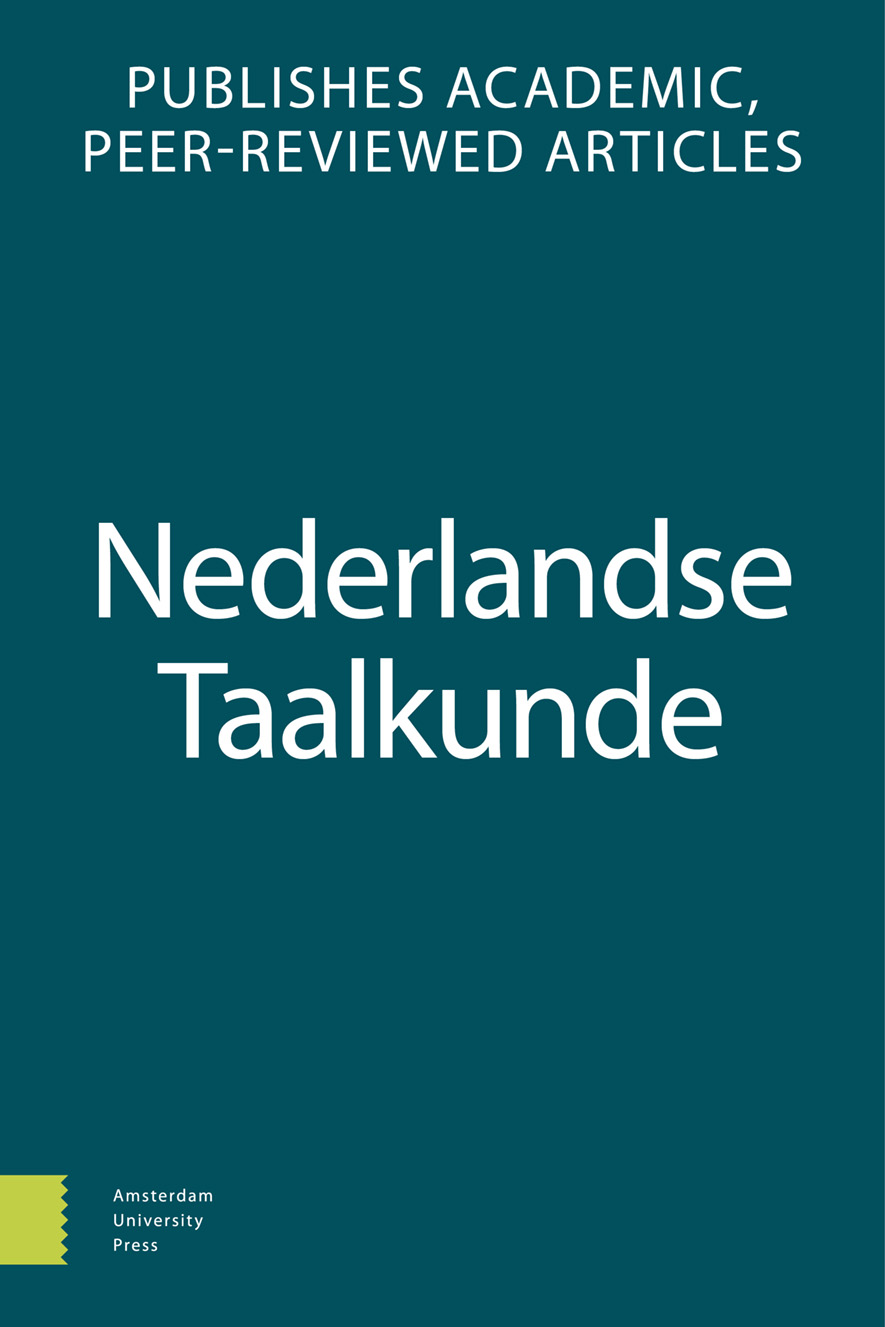- Home
- A-Z Publications
- Nederlandse Taalkunde
- Previous Issues
- Volume 28, Issue 1, 2023
Nederlandse Taalkunde - Volume 28, Issue 1, 2023
Volume 28, Issue 1, 2023
Language:
Dutch
- Artikelen
-
-
-
oa Volgordevariatie in groepen met receptief krijgen + voltooid deelwoord in de Nederlands Nederlandse krantentaal1
More LessAuthors: Gauthier Delaby & Timothy CollemanAbstract This article presents the results from a corpus-based investigation of the word order variation observed in verb clusters with ‘receptive’ or ‘semipassive’ krijgen ‘to get’ + a past participle, i.e. between the order in dat hij het boek overhandigd kreeg and the one in dat hij het boek kreeg overhandigd ‘that he was handed (literally: got handed) the book’. In contrast to the same word order variation i Read More
-
-
-
-
oa Probing early lexical and morphological processing in Dutch with the MMN response
More LessAuthors: Hernán Labbé Grunberg, Judith Rispens, Jan Don, Fred Weerman & Dirk Jan VetAbstract The past tense inflection has been a popular phenomenon to study the representational status of morphologically complex words. While several experiments in the processing of past tense verbs across languages have shown these verbs are stored via their constituent morphemes, experiments in the processing of the Dutch past tense indicate that these words are lexically stored in their surface form and therefore Read More
-
-
-
oa A functional typology of Dutch insubordinate infinitives
More LessAbstract This paper aims to offer a typology of Dutch insubordinate infinitives, which, following Evans’s (2007) definition of insubordination, are defined as ‘the main clause use’ of infinitival constructions. The main objectives of this paper are to provide a pragmatic analysis of these constructions in Dutch and, through cross-linguistic comparison, investigate whether their attested pragmatic functions correspond to th Read More
-
- Squibs
-
-
-
oa Prospectief aspect in het Nederlands
More LessAbstract Prospective aspect in Dutch Prospective (also known as proximative, imminent or pre-inchoative) aspect presents some subsequent situation as imminent while underspecifying its realization. An English example is beaboutto, as in ‘I am about to leave’. Dutch has several expressions tied to this semantics, including op het punt staan ‘lit. stand on the point: be about to’. This squib presents the first expl Read More
-
-
- Artikelen
-
-
-
oa De structuur van lidwoordloze eigennaamsgroepen en de positie van het adjectief daarin
More LessBy Ina SchermerAbstract Although the use of binominal groups with a proper name and no article is increasing rapidly, there is no common opinion as to their structure. I argue that the way adjectives behave in these groups gives an indication of the structure.
-
-
- Boekbesprekingen
-
Most Read This Month
Article
content/journals/13845845
Journal
10
5
false
en

Most Cited Most Cited RSS feed
-
-
oa Goed of fout
Authors: Hans Bennis & Frans Hinskens
-
- More Less

